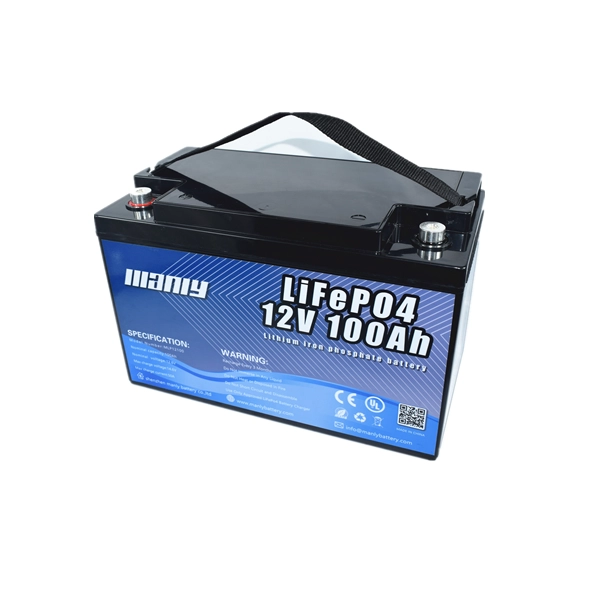More Products
Decoding the Future: Lithium Iron Phosphate vs Lithium Ion
Introduction
We live in a tech-rich era. Here, batteries aren’t just a need. They are a necessity. More so, for our devices and cars. Today, we ask more of batteries. We need them to last longer, perform better, and be safer. In this battery world, two names often pop up. Lithium-ion and Lithium Iron Phosphate.
Purpose and Overview of the Article
So, what’s this article about? It’s simple. We aim to dig deep into these two battery technologies: Lithium-ion and Lithium Iron Phosphate. These batteries power our smartphones, laptops, electric cars, and even energy storage grids. Yet, they’re complex and diverse in their own ways.
In this article, we’ll explore what these batteries are made of. We’ll compare their energy levels, life cycles, and safety features. We’ll also look into the costs involved and where they’re best used.
This piece is meant for everyone. Manufacturers, tech enthusiasts, and everyday users will find it useful. Our aim? To help you understand the world of Lithium-ion and Lithium Iron Phosphate batteries. This will give you the insights needed to make informed choices.
By the end of this read, you should have a good grasp of these battery technologies. So, sit back, relax, and let’s dive into the world of batteries.
Understanding Battery Technology: Lithium-Ion vs. Lithium Iron Phosphate
Lithium-Ion Batteries: Key Features and Applications
Let’s start with Lithium-ion batteries. They’re in your phone. In your laptop. Even in your car. But, what makes them so popular?
Lithium-ion batteries pack a punch. They have high energy density. This means more power in less space. Plus, they’re lightweight. This makes them perfect for portable devices.
But that’s not all. These batteries charge fast. They also have a lower self-discharge rate. That means your devices stay powered up for longer. That’s why you find them in smartphones, laptops, and electric vehicles.
Lithium Iron Phosphate Batteries: Overview and Benefits
Now, let’s talk about Lithium Iron Phosphate batteries. They’re newer in the scene. But they’re gaining ground fast. Why?
These batteries are all about stability. They handle high temperatures well. They’re also safer. They won’t catch fire or explode if things go wrong. Plus, they have a long life cycle. This makes them ideal for heavy-duty use.
So where do you find them? They’re in electric vehicles, medical devices, and even in grid storage. They’re also in devices that run for long hours. Think of UPS systems, solar lights, and more.

The Science Behind Lithium-Ion and Lithium Iron Phosphate Technologies
The magic of these batteries lies in their chemistry. In Lithium-ion batteries, you’ll find Lithium Manganese Oxide or Lithium Cobalt Dioxide. These give the batteries their high energy density.
On the other hand, Lithium Iron Phosphate batteries have Iron Phosphate. This gives them their safety and temperature features.
Understanding these batteries isn’t always easy. But it’s essential. It helps us know where and how to use them. And most importantly, it helps us make the best of our devices.
We’ll delve deeper into the science behind these batteries in the next sections. So, stay tuned!
A Deep Dive into Lithium-Ion Batteries
Composition and Working Mechanism
Let’s dissect the lithium-ion battery. What’s inside? First, you have the cathode. It can be either lithium manganese oxide or lithium cobalt dioxide. Then, there’s the anode, made of graphite. Between them, lies the magic. The lithium ions move from one end to another. This flow creates the power we need.
Now, the working mechanism. When you charge, lithium ions move to the anode. When you use the device, they flow to the cathode. This back and forth creates the energy that powers your device.
Energy Level Differences with Other Batteries
So, how does lithium-ion compare with others? Here’s the deal. Lithium-ion has a higher energy density. That’s 150 to 200 watt-hours per kilogram. That’s higher than most batteries out there.
The result? You get more power for the same weight. This makes lithium-ion ideal for power-hungry devices. Think of your smartphone or electric car.
Life Cycle, Storage, and Safety Concerns
Every battery has a life. For lithium-ion, it’s about 500 to 1,000 cycles. That’s how many times you can charge and discharge the battery. After that, the battery’s capacity decreases.
What about storage? Lithium-ion batteries do well. They have a shelf life of around 300 days. That means you can store them for long without losing too much charge.
But here’s a concern. Safety. Lithium-ion batteries can be unstable at high temperatures. They can also experience thermal runaway. That’s when the battery gets hotter, causing a reaction that makes it even hotter. This can lead to a fire or explosion.
But don’t worry too much. With proper use and care, lithium-ion batteries are safe. In the next section, we’ll compare this with the Lithium Iron Phosphate battery. So, keep reading!
Exploring Lithium Iron Phosphate (LiFePO4) Batteries
Understanding its Unique Chemistries
Let’s dive into Lithium Iron Phosphate, also known as LiFePO4. Inside this battery, you’ll find a cathode of iron phosphate and an anode of graphite. Quite different from lithium-ion, right?
Energy Levels and Discharge Rates
Energy-wise, LiFePO4 packs a punch. Its energy level is between 90 and 120 watt-hours per kilogram. While this is lower than lithium-ion, don’t be fooled. The real power lies in its discharge rate. It can go from 1C up to 25C. That means it can deliver more power in a shorter time. Especially at high temperatures.
Life Cycle Differences and Long-Term Storage Benefits
What about life cycle? LiFePO4 beats lithium-ion hands down. Its life cycle is between 1,000 and 10,000 cycles. And storage? It’s impressive, with a 350-day shelf life.
Small and Lightweight
Size-wise, LiFePO4 may be bulkier than lithium-ion. But it’s still compact and light enough for many applications.
Temperature Range
Here’s the thing. LiFePO4 is a champion at high temperatures. It can handle the heat without degrading as much as other batteries.
Cost
When it comes to cost, LFP batteries play it cool. They’re more cost-effective because they’re made from abundant, cheaper materials. And, let’s not forget their longer life span. That’s money saved on replacement costs.
Voltage
Lastly, the voltage. LiFePO4 has a nominal voltage of 3.2V or 3.3V. That’s slightly lower than lithium-ion. But with its high discharge rate, it still delivers plenty of power.
In the next section, we will compare the two side by side. Stay tuned!

Lithium Iron Phosphate vs. Lithium-Ion: A Comparative Analysis
Energy Density: A Comparative View
Let’s start with energy density. The winner here is lithium-ion, with a superior 150 to 200 Wh/kg. But remember, LiFePO4’s high discharge rates make it a strong contender.
Life Cycle: Which Lasts Longer?
Life cycle? LiFePO4 takes the cake, offering a whopping 1,000 to 10,000 cycles. In contrast, lithium-ion provides 500 to 1,000 cycles. So, for long-term applications, LiFePO4 could be a better bet.
Safety and Stability: A Key Differentiator
Safety is a big deal. LiFePO4 shines here, thanks to its thermal and chemical stability. Unlike lithium-ion, it doesn’t experience thermal runaway and stays cool even in high-temperature scenarios. And yes, it’s incombustible, even when mishandled.
Disposal and Environmental Impact: What’s Easier to Handle?
Last, but not least, disposal. LiFePO4 is non-toxic, making it easier to handle post-use. On the flip side, lithium-ion (with a lithium cobalt dioxide chemistry) is deemed hazardous. Extra care is needed during its disposal.
That’s it! Now, you have a clearer idea of how these two types of batteries stack up. Remember, your choice depends on the specific needs of your application. Stay tuned for the next section where we will delve into ideal applications for each type!
Key Applications of Lithium-Ion and Lithium Iron Phosphate Batteries
Lithium-Ion in Consumer Electronics: A Dominant Presence
Let’s start. Lithium-ion batteries. They’re everywhere. In your smartphones, laptops, tablets, and more. Why? They’re light, they’re portable, and they pack a lot of energy. High-energy devices love them. They’re perfect for powering your tech on day one, and many days after.
Lithium Iron Phosphate in Industrial and Automotive Applications
Now, let’s turn to LiFePO4. Where do you find it? Think bigger. Industrial machinery, electric vehicles, medical devices. Even in the military. These industries love it. Why? Safety and longevity. LiFePO4 can handle high temperatures, it lasts long, and it’s safe. Yes, it’s slightly heavier and bulkier, but these sectors don’t mind.
Understanding the Best Use Cases for Each Technology
So, which one do you need? Depends. Want portability and high energy on the go? Go for lithium-ion. Need safety and longevity, and don’t mind some extra weight? Choose LiFePO4. Each has its benefits. Each has its costs. It all boils down to your specific needs.
And that’s it! We’ve now explored the key applications of lithium-ion and lithium iron phosphate batteries. Join us in the next section as we explore their cost implications and future prospects!
Manufacturing Considerations for Lithium-Ion and Lithium Iron Phosphate Batteries
The Role of Cost and Resource Availability
Dive into batteries. Let’s talk cost. Lithium-ion and LiFePO4. Both aren’t cheap. But, there’s a difference. LiFePO4 is cheaper. Why? It’s all about chemistry. Iron phosphate is safe and cheap. Manufacturers don’t have to shell out for expensive recycling. Win-win.
The Impact of Regulation and Safety Standards
Next, let’s look at regulations. Safety is big. Especially for batteries. LiFePO4 shines here. It’s safe. It’s cool, even in high temps. No fear of explosion or fire. And it’s easy to dispose of. No special handling needed. Regulations favor it. For lithium-ion, it’s a different story. It’s more reactive. It can heat up, fast. Disposing of it? Not so simple. It’s a hazardous material, so it needs careful handling.
Balancing Performance and Practicality in Product Design
Lastly, let’s discuss design. Manufacturers want performance. But they also want practicality. Lithium-ion is light and powerful. That’s good for portability. For smartphones, tablets, laptops. But LiFePO4? It’s a bit heavier, a bit bulkier. Yet, it’s safe and durable. It’s perfect for bigger machinery, electric cars, medical equipment. It’s all about striking a balance.
So there you have it. The ins and outs of manufacturing with lithium-ion and lithium iron phosphate batteries. And remember, every battery has its place. Stay tuned for the final wrap up.
The Future of Lithium Batteries: Trends and Predictions
Emerging Innovations in Lithium Battery Technology
Let’s gaze into the future. What’s next for lithium batteries? Innovation. It’s a hotbed. We’re seeing new chemistries. We’re seeing enhanced safety. And we’re seeing better longevity. All of this could revolutionize how we power our world. In the pipeline are solid-state lithium batteries. Game changer? Maybe. They could provide more safety and energy density. Stay tuned.
The Role of Lithium Batteries in a Sustainable Future
So, what about sustainability? Lithium batteries have a big part to play. They’re crucial for electric vehicles. Goodbye, fossil fuels. Hello, green energy. And let’s not forget about grid storage. Renewable energy sources like wind and solar need storage. Lithium batteries can step in. We’re looking at a greener, more sustainable future.
Conclusion
We’ve been on a journey. We’ve delved deep into the world of lithium batteries. What have we learned? Both lithium-ion and LiFePO4 have their perks. Lithium-ion is light, portable, and packs a punch. LiFePO4 is safe, durable, and cost-effective. They both have their place.
But it’s not just about today. We’re looking at a future powered by lithium batteries. Innovation is brewing. And sustainability is driving it all forward. So, next time you power up your phone, spare a thought for the humble battery. It’s a small thing, but it’s part of a bigger, brighter future.


